8 Gates of Kaliningrad
Kaliningrad is former Königsberg. This territory of Eastern Prussia from ancient time was attacked by lithuanians and people used to protect themselves.
The 18th century was hard for Königsberg, this city was the centre of Napoleon resistance. After Napoleonic Wars the city authoritires decided to build bastions and additional ring of fortifications.
Some of them are saved and you can see it in modern Kaliningrad.
The first defensive roundabout of Königsberg was built in the 17th century. Then the trees were piled up, the gates and other fortifications were erected. At the end of the XIX century, a second defensive contour was created, partially repeating the first one. Well, in the XX century, all the defensive and fortified buildings were sold to the city, losing its military significance.
Near the former pond Oberteich,It is called Upper lake now in Kaliningrad. Really, it is an artificial pond made by Teutonic knights, not lake. It was created in 1270. It happened when the Knights of the Teutonic Knights blocked one of the tributaries of the Pregoles River. Near this Upper lake is situated the museum of Amber. This museum is located in
fortress tower of the middle of the nineteenth century. The Don Tower (Wrangel)
The tower was built in 1853 under the guidance of the developer of the general plan of the fortifications Koenigsberg chief of the engineering corps Ernst Ludwig von Aster and was part of the system of urban defensive fortifications. It bore the name of the Prussian General-Field Marshal Frederick Charles Don, a participant in the war of liberation against the Napoleonic invasion. The building is also a monument of the Second World War.

The Don Tower, The Museum of Amber
Next to the museum Rosgarten Gate (intersection of Chernyakhovskogo
and Alexander Nevsky streets). It no longer does their function, you can't pass through them. It is a beautiful architectural monument.
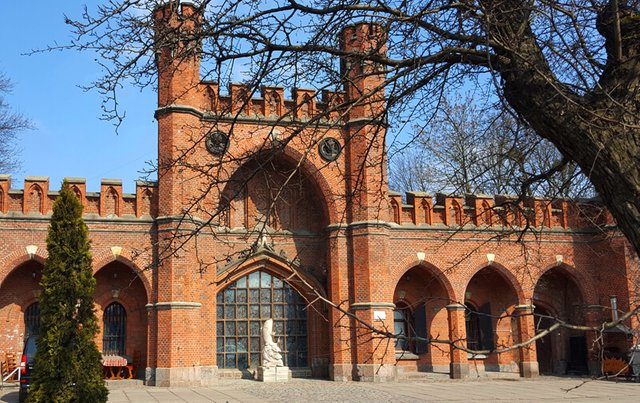
The Rosgarten Gate
In Litovskey Val Street there are many histirical buildings.
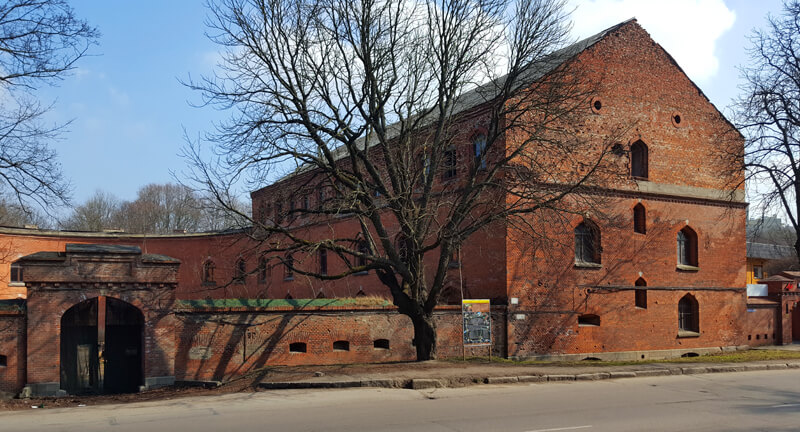
All these buildings are used in different aims,often they are offices or werehouses...
In Litovskey Val Street we meet The King's Gate. It was built in the 1840s as part of the city’s second defensive ring, this mighty redbrick gate has 2-m (7-ft) thick walls and features statues of Frederick I, Prussia’s first king; Ottokar II, the king of Bohemia and Duke Albert, the last Grand Master of the Teutonic Order. It weathered the bombardment of 1944 and the damage was not repaired until 2005. Since then it has been used as a cultural centre and has a small museum dedicated to Peter the Great’s visit to Königsberg in 1697.
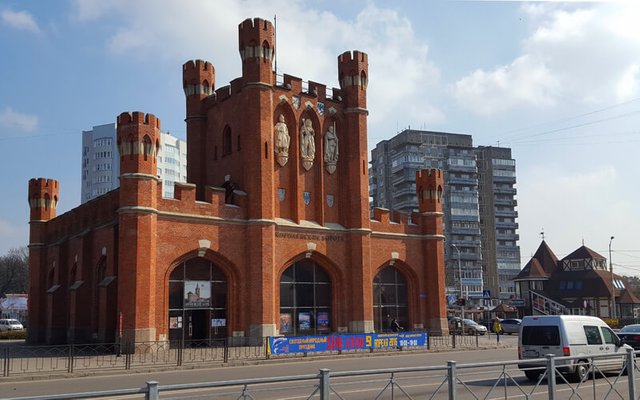
The king's Gates
In The Moscow Prospect there is The Zakneim Gate. Last few years the art space "Gates" is located here. It's very nice atmosphere of museum or gallery like with very educated and polite people. Different photo exhibitions or vernissages take place in the Zakheim Gates. Local artists gather and people who are not indifferent to the past of Koenigsberg. They organize lectures, exhibitions, master classes, hold celebrations, for example, Zakheim Day. And they also dream of reviving the former glory of Kaliningrad as the greenest city in Russia, and so they parked the park and planted trees near the gate. And there is a cafe with delicious cakes and wonderful coffee.
The Zakheim Gate as part of the defensive ring was built in the middle of the 19th century on the site of old wooden fortifications. This is one of the seven city gates that have survived to this day, and the whole gate was eight. A single protective system - the earthen rampart - encircled the city, the gates closed passages, as if carved into the body of the earth. At night they locked themselves up and sent out a guard. From sunset to dawn, the entrance to the city was banned, except for doctors and priests.
The Zakheim Gate today is a separate building on a busy square. There is no earth wall, no moat with water, no lift bridge. Of the three arches for the passage, there was only one - the central one. Preserved towers: round from the side of the city and octahedral - from the outside. In the towers the loopholes are cut, at the top they form a circular belt. And above it - decorative niches in the form of a Latin cross, it is called "the cross of the West" or "the cross of Life".
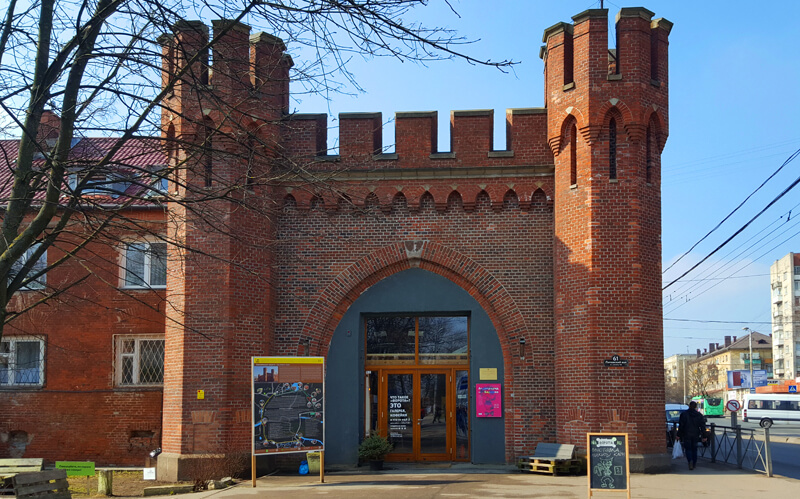
The Zakheim Gates
The Friedland Gate is at the intersection of Kalinin Avenue and Dzerzhinsky Street. The gate is called in honor of the city of Friedland town (nowadays it is Pravdinsk). One of the last gates of the defensive ring to be constructed, The Friedland Gate has the same redbrick Gothic structure as King’s Gate, but here brick is darker. A statue of Siegfried von Feuchtwangen, a Grand Master of the Teutonic Order, that originally adorned its outer wall was restored in 2005 andthe gate is now home to a museum exhibition dedicated to the history of pre-war Königsberg, from 1862 to 1945.
Nowadays in the Fridland Gate there nice lectures for children about Kalingrad-Königsberg history, nice kid-orientd excurcions and even puppet theatre.
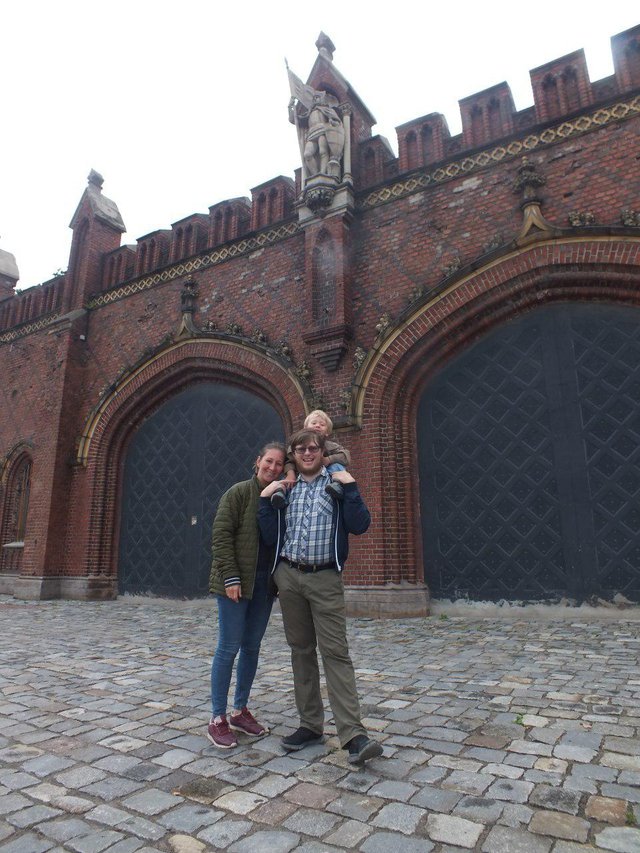
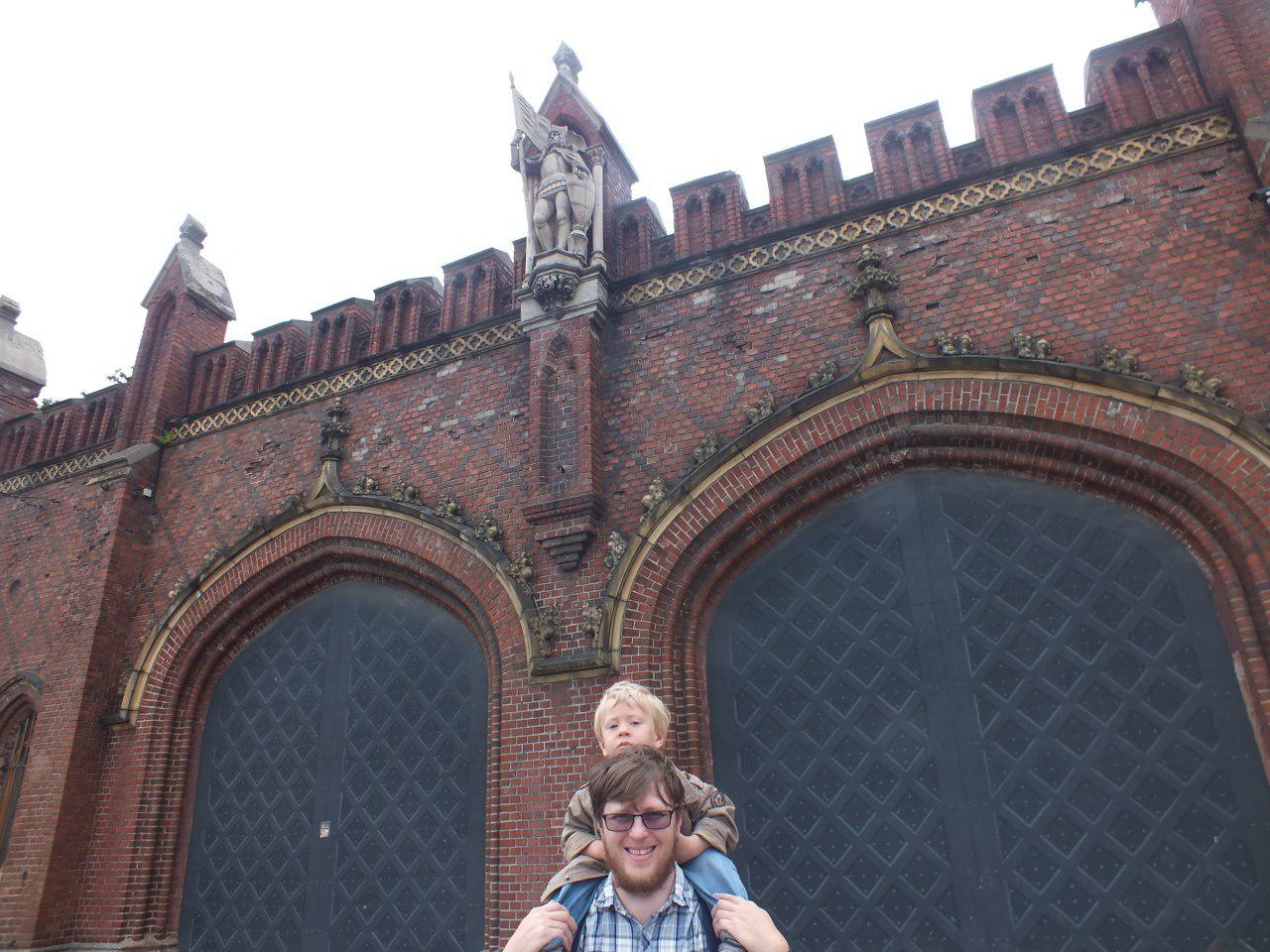
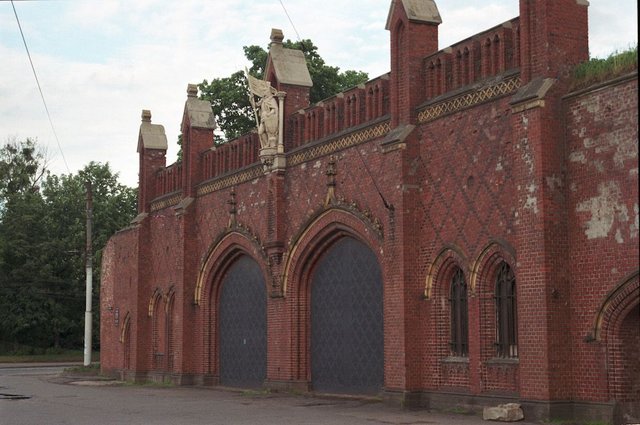
The Fridland Gate
The Brandenburger Gate located at the end of Bagration Street, passing further to Suvorov Street (formerly Berlin), on the border of the historic urban district of Haberberg.
The Brandenburg Gate was built in Koenigsberg in 1657 on the southwestern section of the First Great Wall at the intersection with the road leading to the castle of Brandenburg (now it is settlement Ushakovo). Because of the lack of funds and the corresponding project, the builders confined themselves to erecting wooden gates, placed under the roof and resting on the earthen rampart. For a reliable cover in front of the ditch dug and filled with water. A hundred years later, by order of the Prussian King Frederick II, the dilapidated structure was broken, and in its place a massive brick building was built with two spacious thoroughfares, which had a pointed end. New strong gates completely blocked the road to the south and served as a reliable defense of the city.
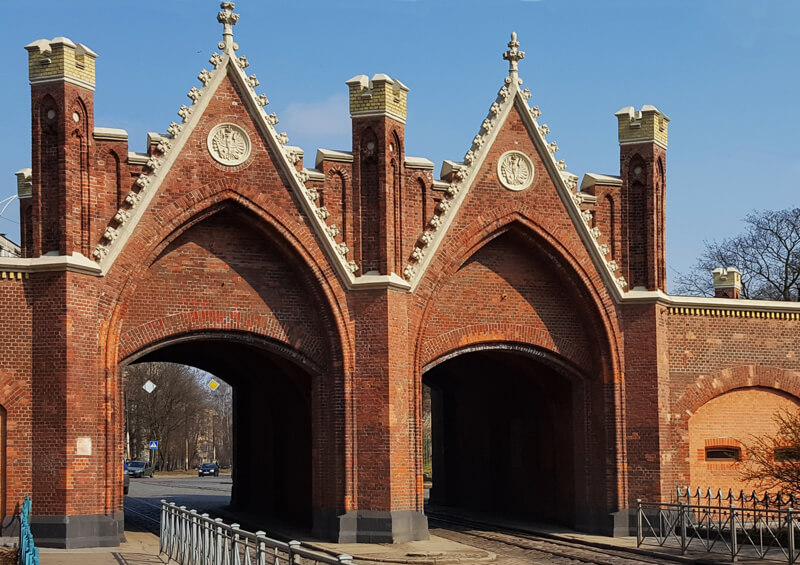
The Friedrichsburg Gate (street Portovaya). Once it was a whole fortress, which Peter I, who arrived in Koenigsberg with the Grand Embassy, was very inspired. Following the example of Friedrichsburg, who guarded the river entrance to the city, Kronstadt was built.
During the storming of Koenigsberg in April 1945, the Friedrichsburg Gate was destroyed. They lost the south-east tower and the southern part of the eastern wall of the guardhouse. In the post-war period, a field military printing plant was located at the gate, then a convoy. In 1960, the Friedrichsburg Gate was taken for state protection as a monument of architecture, in 2002 it was granted the status of an object of cultural heritage of federal significance, and in March 2007 it was transferred to the Museum of the World Ocean.
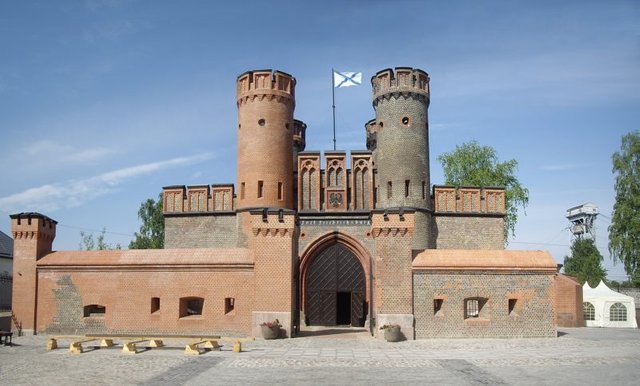
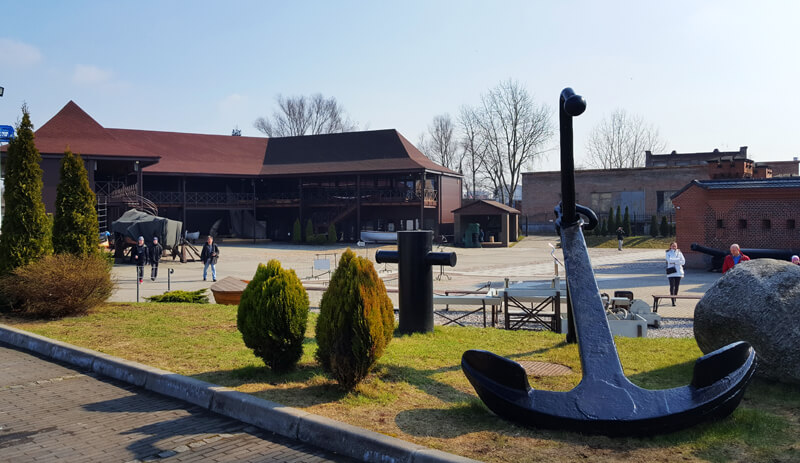
On the territory of this Gate a cat lives)))
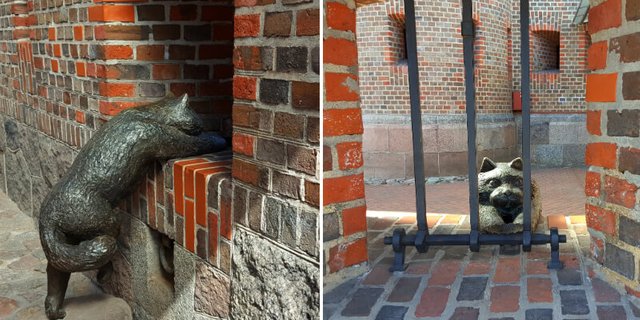
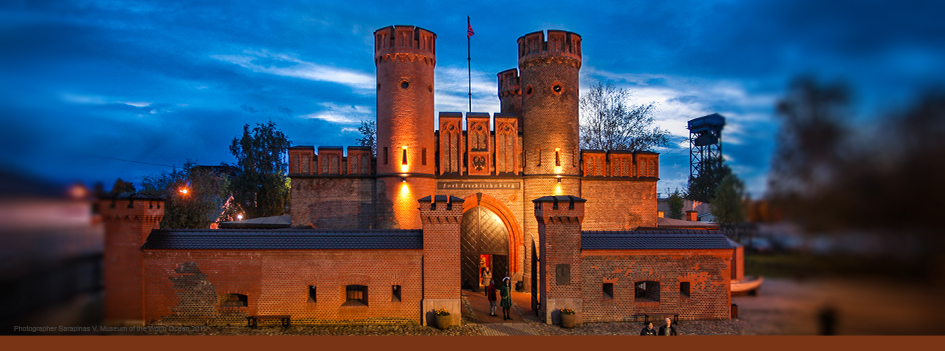
The Friedrichsburg Gate
The Railway gate is located under the Guards Avenue. This gate retained their functions: a pedestrian path leads through them. Previously, through them ran the railway to Pillau (now Baltiysk), hence the name. Now the railway gates are being restored, they say, they will house a museum exposition. Together with the monument to the 1200 guardsmen and the Victory Park, the gates should become part of the military-historical complex.
On the gate there is an inscription with the date of their construction - 1866-1869. It is located on the castle stone gate. The railway gate was designed by the architect Ludwig von Aster (he is also the author of the project of the Ausfal Gate).
In Königsberg, there were other railway gates. The first were built after 1853, they were next to the Brandenburg Gate. Through these gates there was a railway leading to Berlin. There were several other railway gates. All of them were demolished by the twenties.
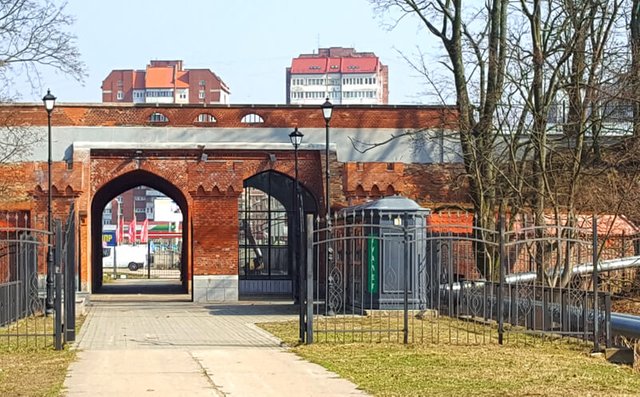
The Railway gate
The Ausfal Gate is located on the south-west corner of the intersection of Guards Avenue and Gornaya Street, in close proximity to the monument to the 1200 guardsmen.
Of all the surviving gates, the Ausfal Gate were rebuilt to a greater extent.
The first Gate around the current site were built in the twenties of the XVII, during the construction of a defensive shaft around the city. Later, in 1866, the gates were built anew, in the style of brick Gothic. Built in the XIX century, the Ausfal Gate passed only pedestrians, and were less significant in relation to the rest of the city gates (which is indicated, for example, by poorer architectural design). The architects Ludwig von Aster designed the new Ausfal Gate.
In 1993, on the top cover of the gate, which is located level with the level of the roadway of the Guards Avenue, an Orthodox chapel of St. George was built, dedicated to the Soviet soldiers who died during the assault on Kö*nigsberg.
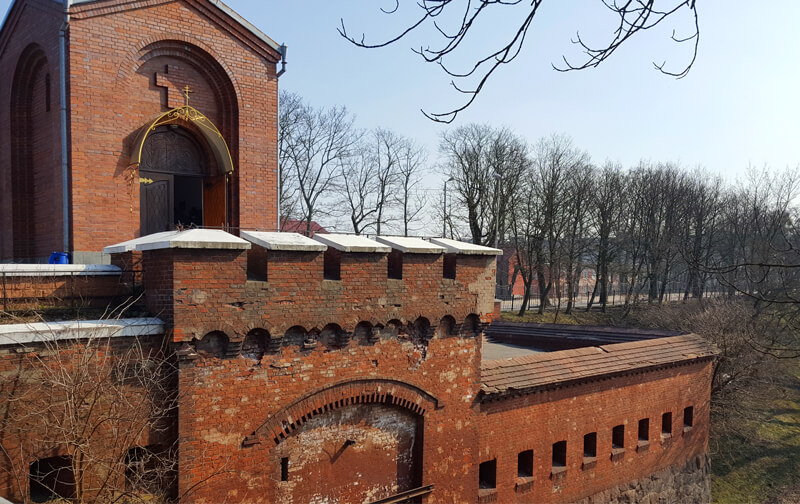
The Ausfal Gate
Welcome to Kaliningrad!!!
You got a 12.82% upvote from @t50 courtesy of @lengalenga!
95% of all SBD bids go to the people who invest by delegating to the bot.
To use this service send a minimum of 0.010 SBD or STEEM to @t50 with the post you want upvoted as the memo.
Low Minimum Bids!
Increase Your Rep!
Draw Attention To your Post.
Earn Passive Income By Delegating SP to the Bot.
Overbid Protection
Voting processed every 2.4h (2,880 blocks).
@t50 follows all followers!
If you do not want to receive upvotes from @t50 you can ask to be blacklisted by replying to this comment.